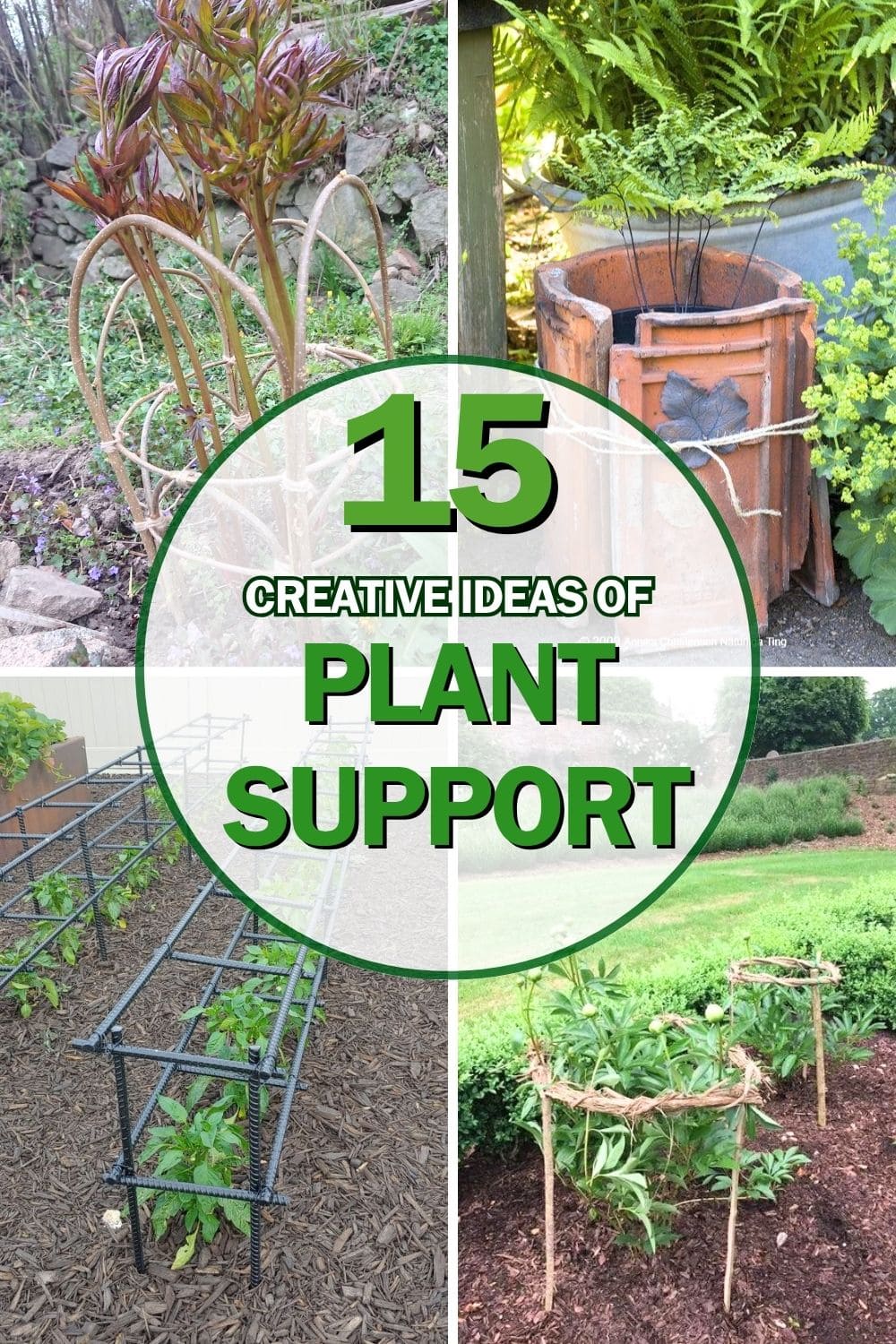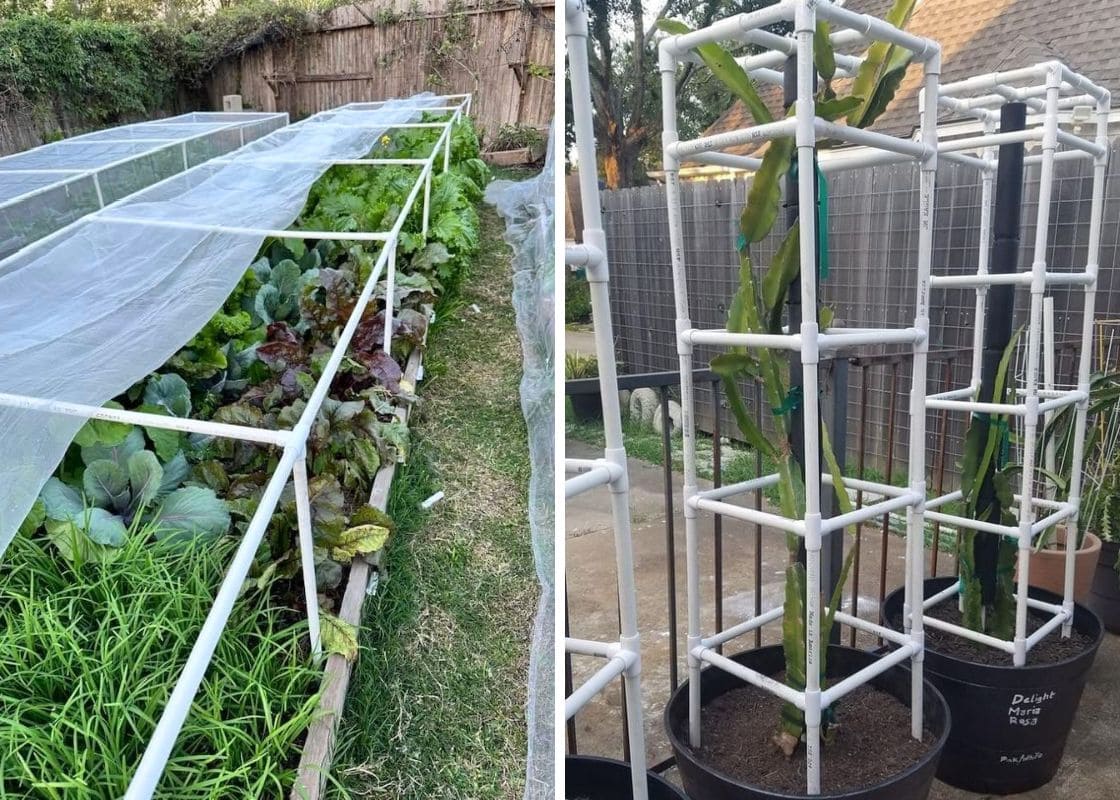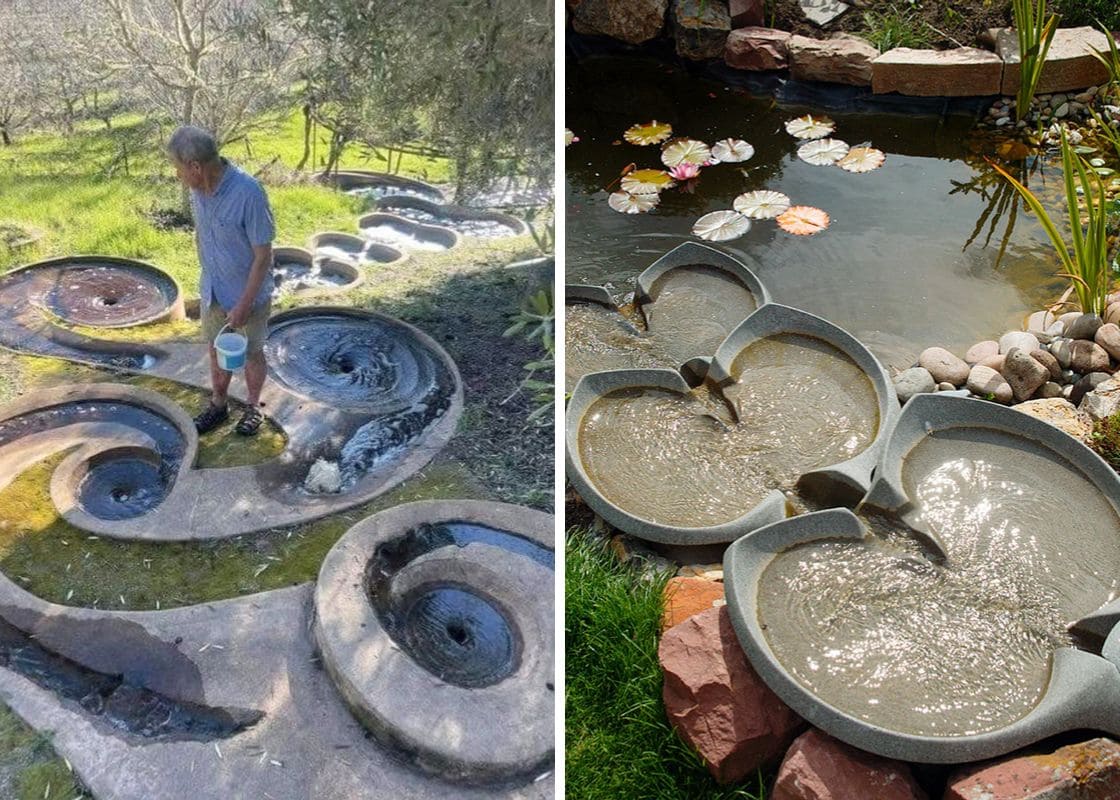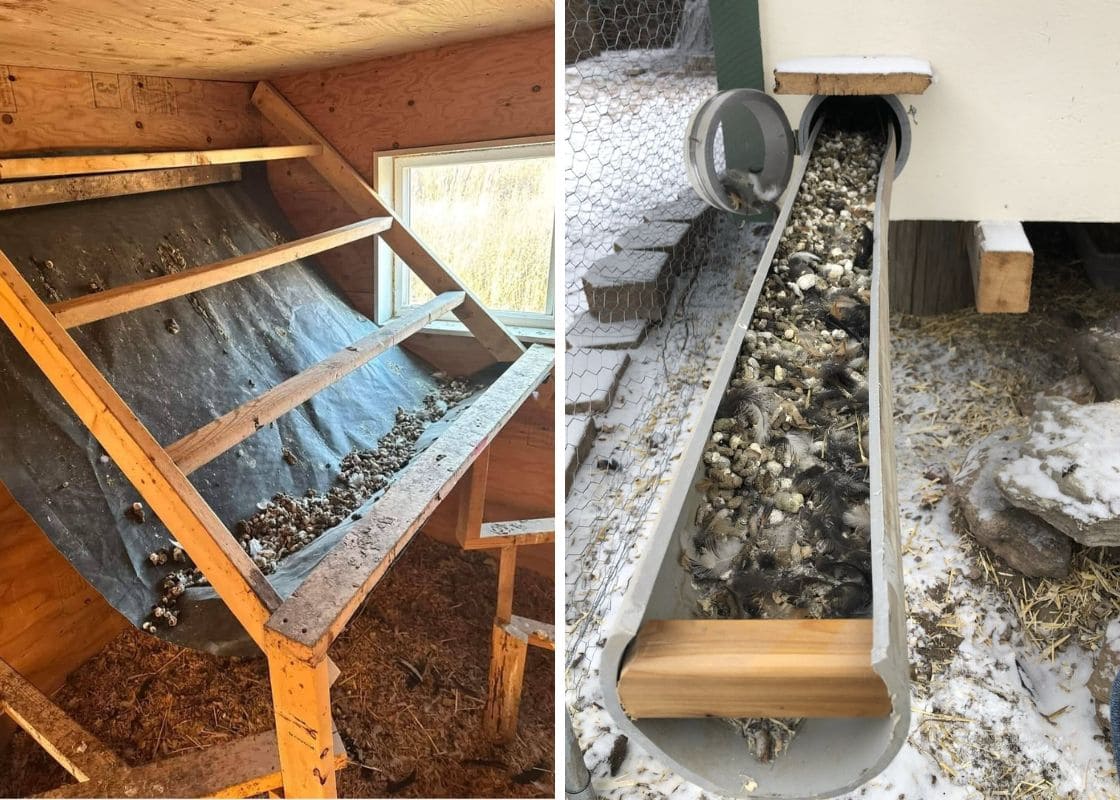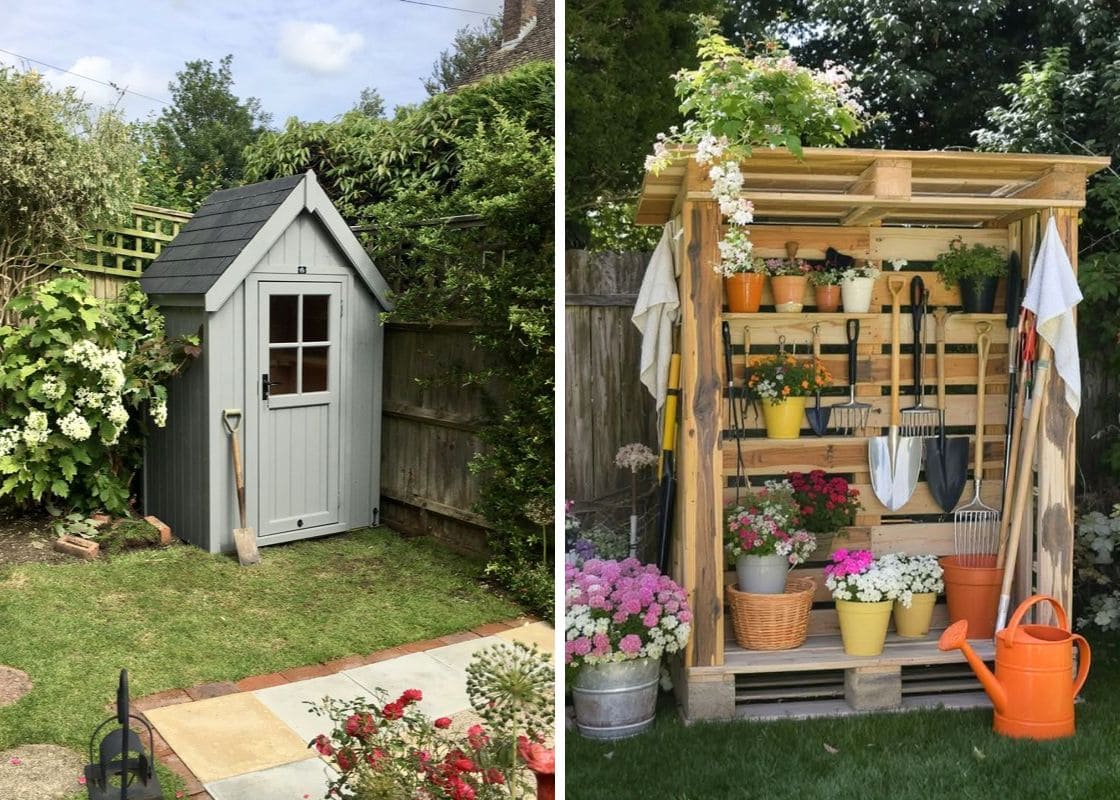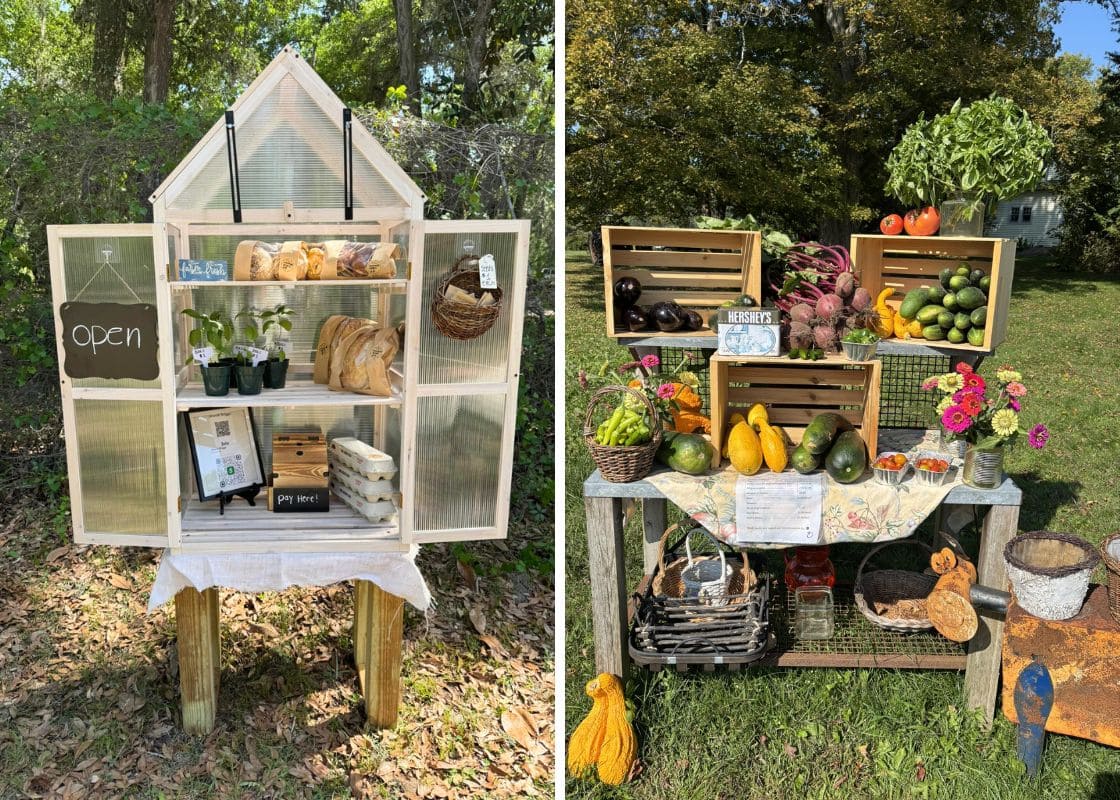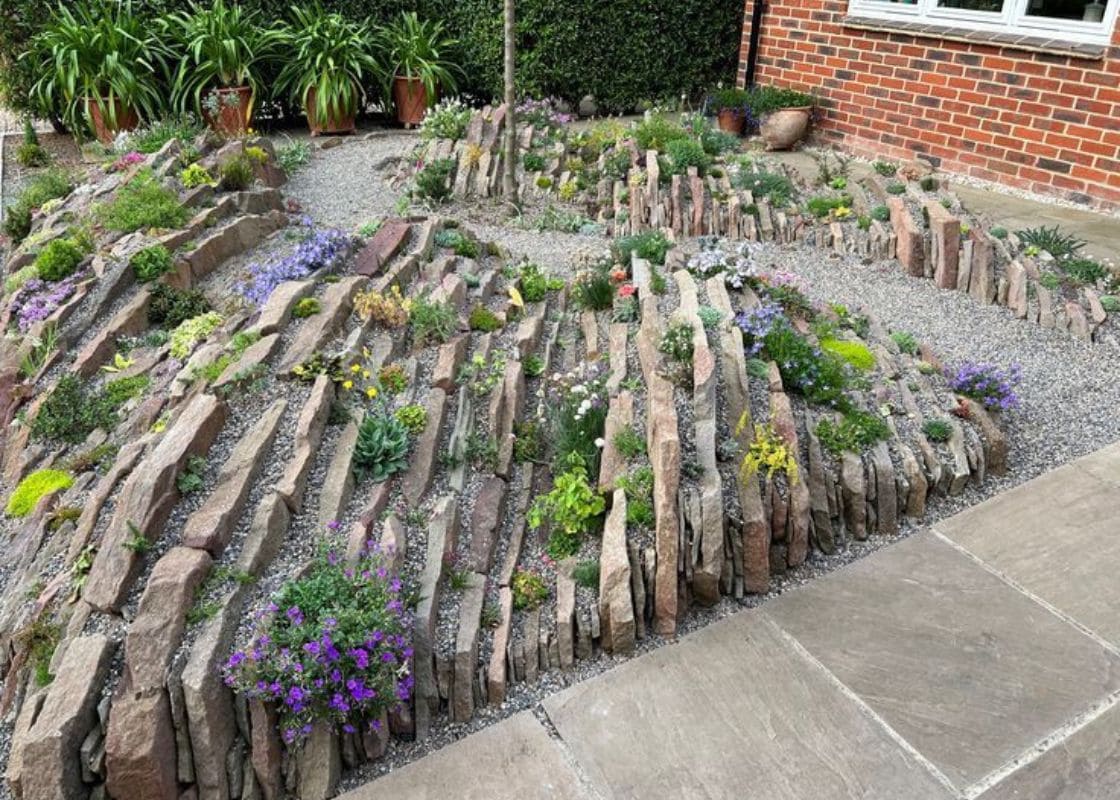When your plants start growing tall and lush, the last thing you want is to watch them flop over or snap in the wind. That’s where good plant supports come in as they’re like the quiet heroes of a thriving garden.
Whether you’re growing tomatoes, climbing beans, or delicate flowers, having the right kind of support can make all the difference in their health, shape, and bloom.
You don’t need anything fancy, either. From repurposed household items to clever natural structures, there are plenty of easy and budget-friendly ways to give your plants the boost they need.
Below, you’ll find 15 creative plant support ideas that not only work beautifully but can also bring charm and character to your garden all season long.
#1. Rebar Tunnel Trellis
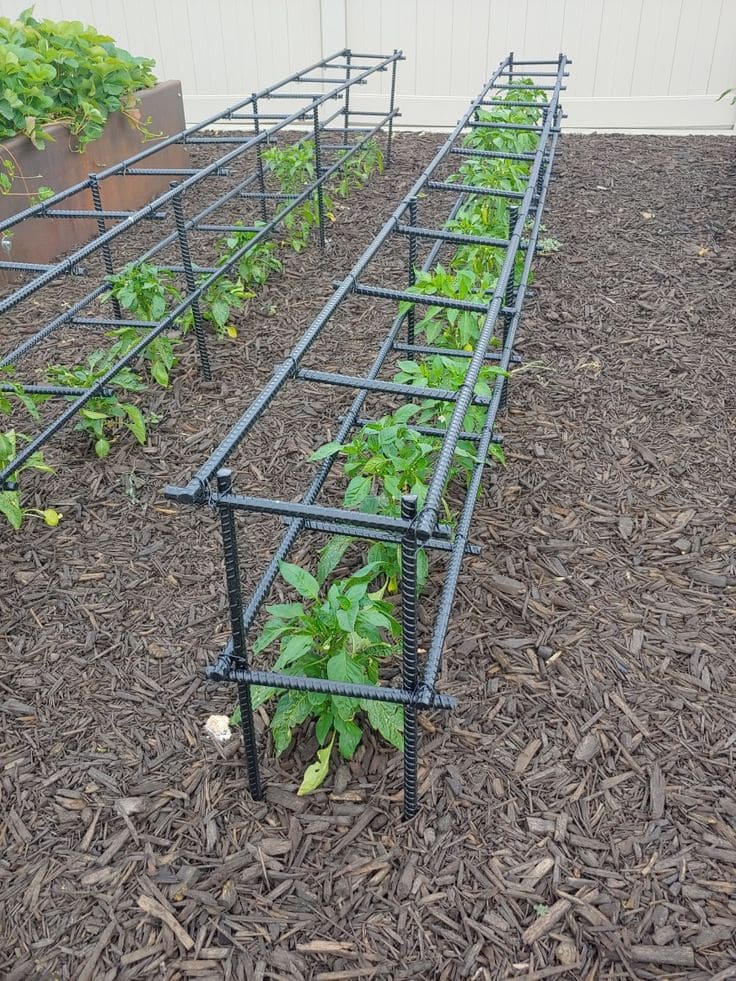
This sturdy, no-nonsense trellis design uses steel rebar to create a low, tunnel-like support system, ideal for rows of heavy-bearing plants like tomatoes, peppers, or even compact indeterminate varieties.
Built by welding or securely tying lengths of rebar into a rectangular grid, this structure offers multiple horizontal and vertical bars for plants to lean on, climb, and rest as they grow.
With this setup, you can guide stems and fruit along the sides or top for better airflow and sunlight exposure. The cage also prevents sprawling and keeps your harvest clean and off the ground.
To build, stake the vertical rods firmly into the soil at both ends of your row. Then, connect horizontal rebar across the top and sides.
#2. Rustic Twig Cage for Bushy Blooms
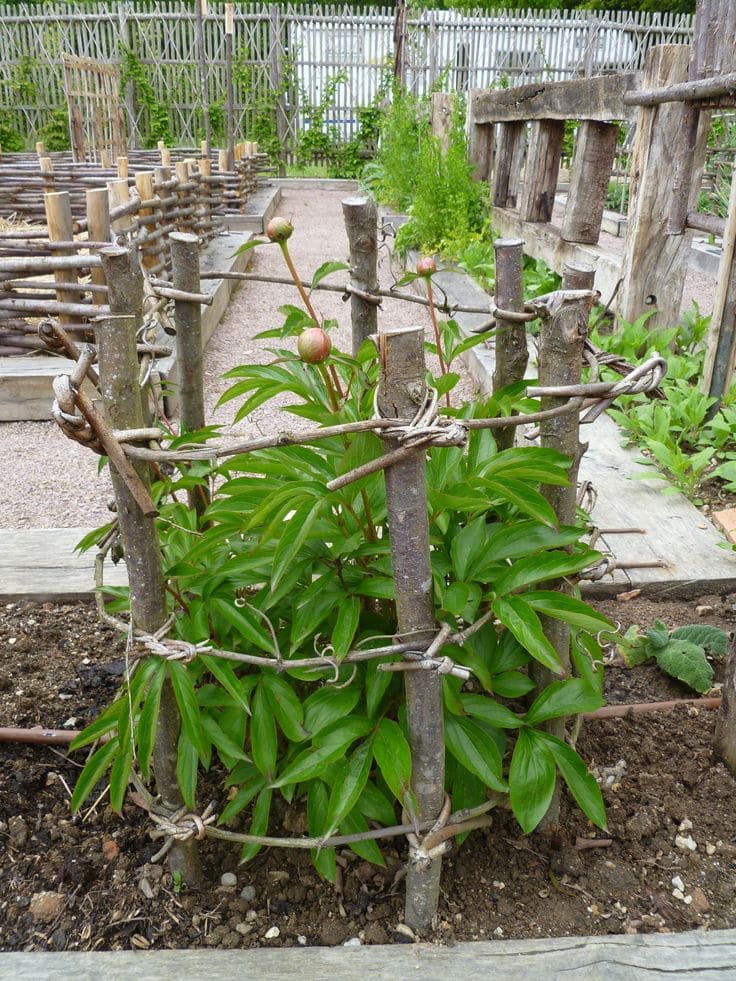
If you love a garden that feels handcrafted and close to nature, this rustic twig cage is a charming and practical solution for supporting upright, bushy plants like peonies, dahlias, or even shrubby herbs.
Built entirely from thick, sturdy twigs or branches and natural jute or garden twine, this support blends beautifully into a cottage or woodland garden aesthetic while giving real structural help.
To create it, gather evenly sized twigs or small branches and hammer them into the soil around the perimeter of your plant in a loose circle. Then, weave and tie thinner twigs or twine horizontally around the posts at multiple heights.
The key is keeping the lower ties snug and letting the top rings expand slightly to accommodate growth. It keeps heavy blooms from flopping and allows air to circulate through the foliage.
Plus, it’s biodegradable, seasonally adaptable, and visually pleasing without standing out too much. A quiet little masterpiece of natural engineering.
#3. Rustic Peony Support Hoops
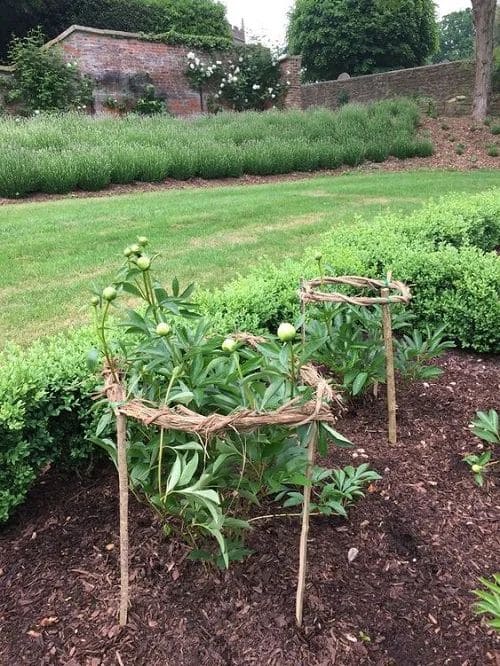
These natural plant hoops are created with just three wooden stakes and a braided twine or straw rope, offering gentle but effective support for peony blooms that are just about to burst open.
As peonies grow heavy with buds, their long stems tend to flop over, especially after rain. This low-profile ring acts like a soft embrace, keeping everything upright without looking intrusive.
To make your own, drive three or four sturdy sticks into the ground in a loose circle around the plant. Then weave or tie a natural rope like jute, raffia, or straw around the stakes in one or two loops, depending on how much support your plant needs.
Specially, it’s budget-friendly, biodegradable, and surprisingly strong. Plus, it makes your flower beds look cared for without feeling controlled.
#4. Rustic Twig Wall Trellis
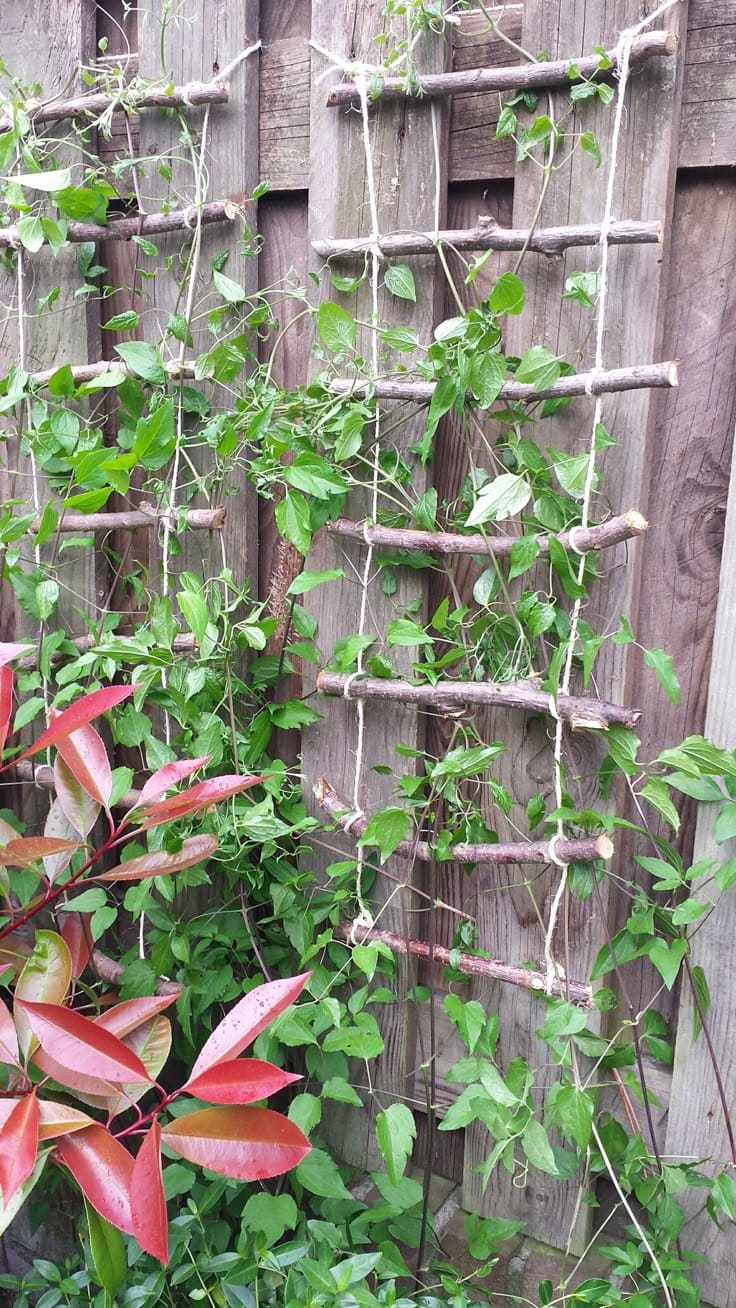
This rustic twig wall trellis proves you don’t need fancy materials to create a beautiful and functional climbing support.
Made entirely from small branches and natural twine, it brings an organic touch to your garden or patio. It’s perfect for lightweight climbers like sweet peas, morning glories, clematis, or even young bean vines.
To make it, simply gather straight twigs or pruned branches, and use sturdy twine to lash them into a ladder-like shape. Then, hang the trellis against a fence, wall, or shed using nails or hooks.
As your plants grow, they’ll naturally weave themselves around the twigs, creating a living green curtain over time. This design works especially well in small gardens or narrow side yards where space is tight but vertical growth is welcome.
It’s easy to customize, make it as wide or tall as you like. And since it’s biodegradable, it can return to the earth once the season ends. Simple, earthy, and undeniably charming.
#5. Willow Dome Plant Support
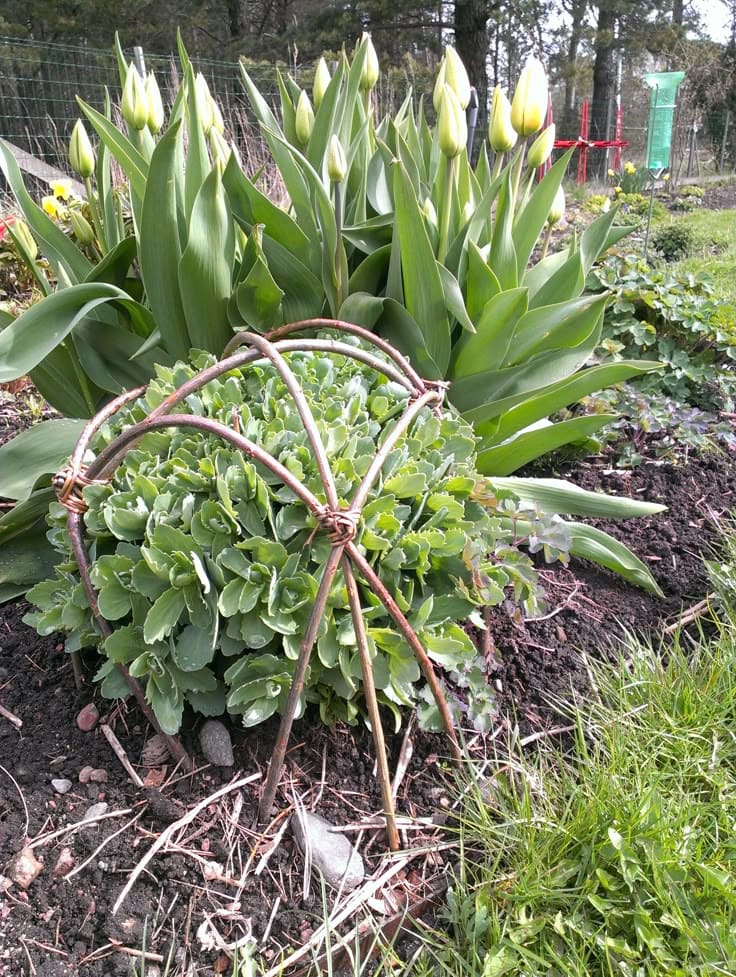
This charming handmade dome is crafted entirely from willow branches and a touch of rustic wire, forming a delicate but effective plant support system.
Ideal for supporting compact, bushy perennials like sedum or peonies, the dome keeps your plants from flopping outward as they grow fuller. It’s especially helpful during heavy rain when stems can bend or break under their own weight.
The open cage shape gently hugs the plant while giving it room to expand. To make your own, gather flexible willow branches and bend them into arches.
Next, secure the intersections with garden twine, jute, or copper wire for a subtle decorative touch. Then push the ends into the soil evenly around the plant, forming a rounded frame.
It’s an easy afternoon project and a perfect way to keep your border plants tidy while adding a touch of handmade elegance to the garden.
#6. Rustic Twig Teepee Trellis for Climbing Plants
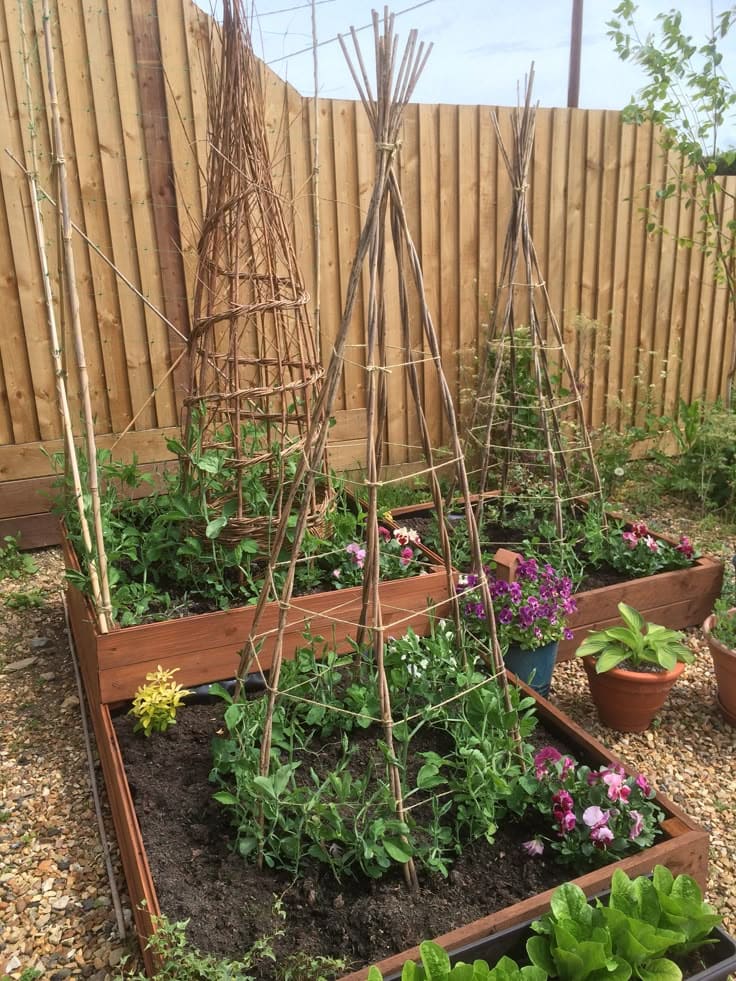
This charming setup is a classic example of a willow or twig teepee trellis, and it’s as practical as it is beautiful.
Built from tall, slender branches tied together at the top, this structure creates a natural cone-shaped frame that’s ideal for supporting climbing plants in raised beds. Peas, beans, and morning glories will happily scramble up the sides, transforming it into a living tower of green and blooms by midsummer.
To make one, simply gather six to eight straight branches of similar length, hazel, bamboo, or willow all work well. Push the ends into the soil in a circle, then draw the tops together and tie securely with garden twine.
Then add horizontal rings for extra support using thinner vines, sticks, or more twine. It’s surprisingly sturdy, and the natural look blends beautifully into cottage or rustic-style gardens.
This method works especially well for raised beds, helping maximize vertical space while adding visual interest. It’s eco-friendly, budget-conscious, and surprisingly fun to build.
#7. Simple Bamboo A-Frame Trellis
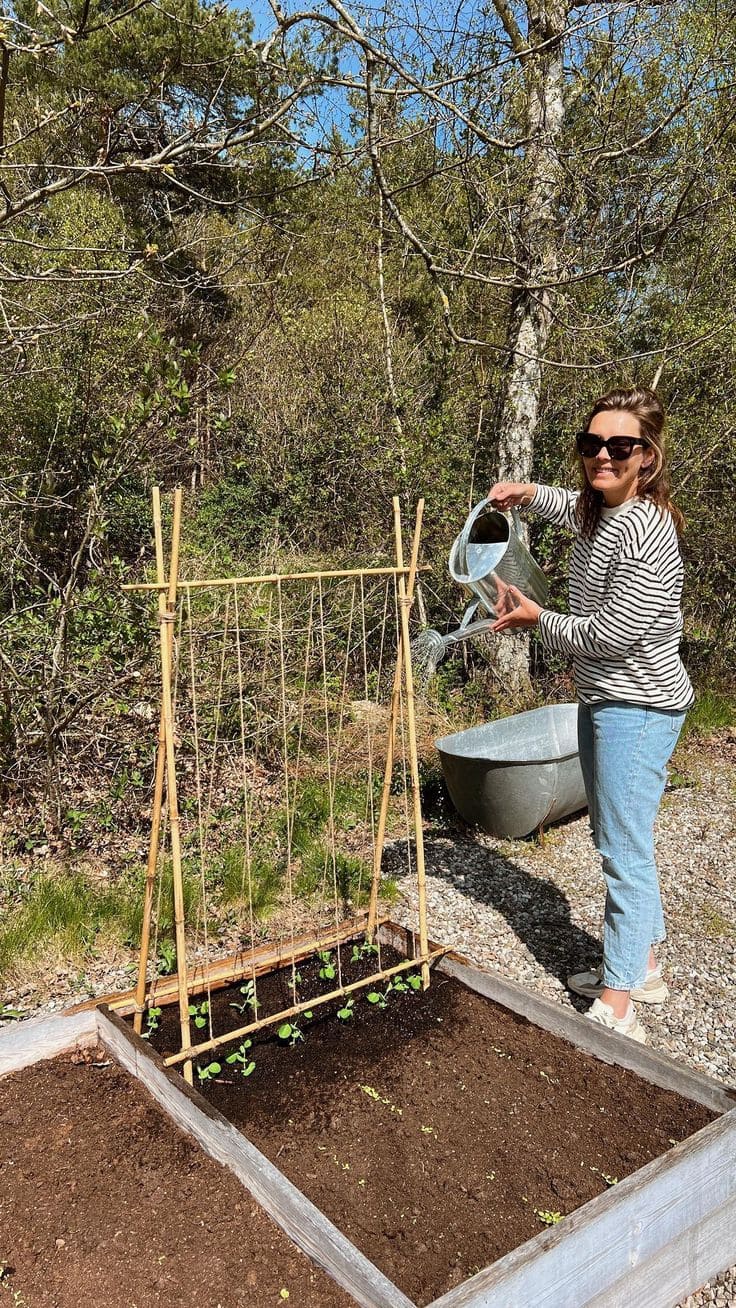
Crafted from bamboo poles and natural twine, this A-frame trellis gives your garden an effortless, rustic vibe while providing essential vertical support for climbing veggies.
The structure maximizes vertical space and keeps plants neatly off the soil, which helps prevent rot and promotes healthier growth. To build it, two bamboo stakes are angled on each side of a raised bed and tied together at the top with sturdy twine.
A horizontal crossbar stabilizes the frame, while strings are tied vertically from top to bottom, giving your young seedlings an easy guide to climb as they grow.
Also, the frame is lightweight, biodegradable, and easy to move or disassemble at season’s end. Perfect for small gardens or beginner growers, this trellis adds visual interest and makes the whole growing experience feel even more rewarding.
See more: Explore 20 Cucumber Trellis Ideas for a Bountiful Harvest
#8. Woven Willow Arch Cage
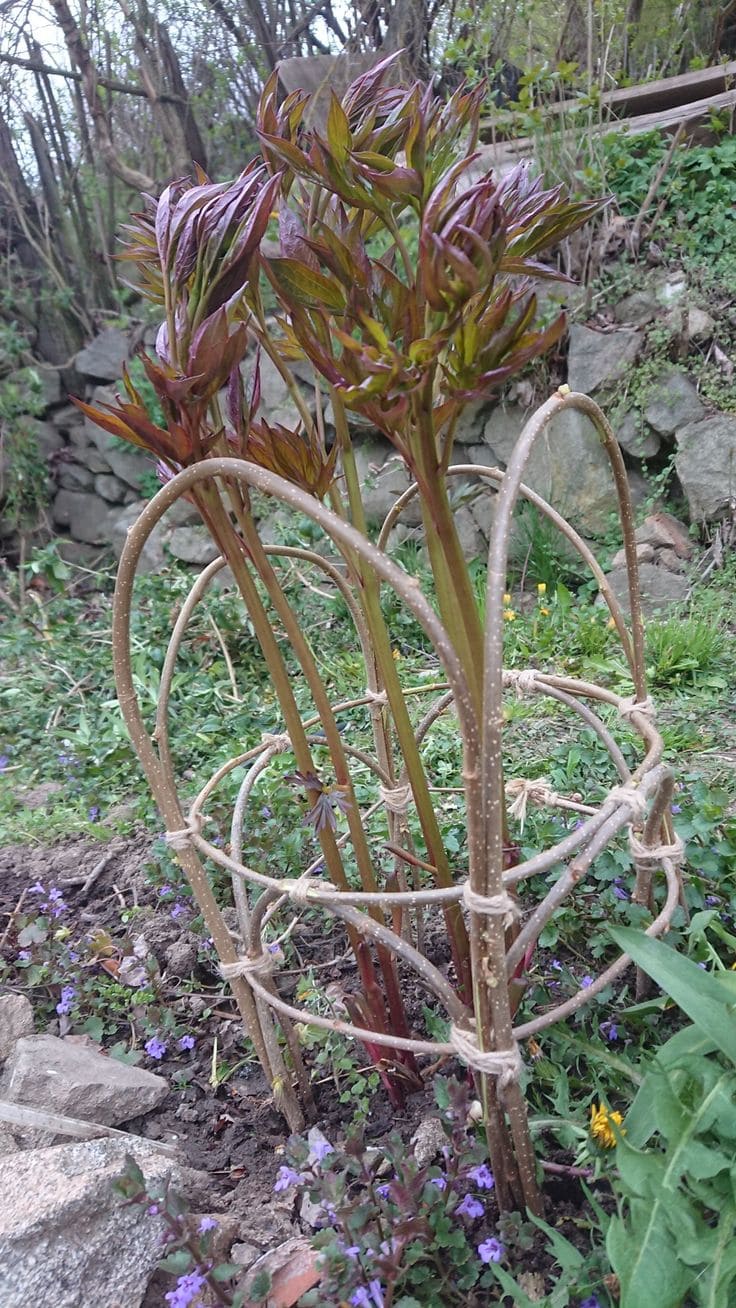
This lovely handmade support cage, built from arched willow or dogwood twigs and bound with natural twine, is a perfect blend of function and charm.
It’s designed to cradle upright perennials like peonies, delphiniums, or lilies, plants known for their dramatic height but often in need of a little structure to stay graceful.
To build one, start with 5-6 long, flexible sticks with slight curvature and push them into the soil in a circular pattern. Then tie horizontal rings of twine or thinner sticks around them at intervals to form a gentle scaffold as the plant grows.
The curved tops don’t just look elegant, they also help corral top-heavy growth when blooms begin to weigh down the stems. This style is especially useful for springtime shoots that grow fast and can easily collapse after rain.
#9. Welded Wire Tomato Corrals
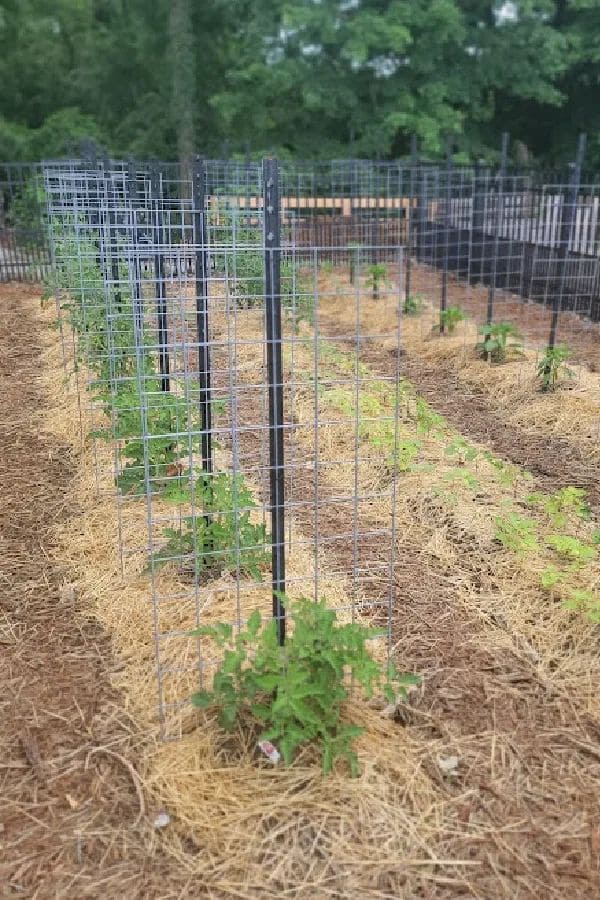
If you’re aiming for a durable and tidy solution for tomato plants, this welded wire panel setup is a fantastic choice. It uses rigid metal livestock panels or welded wire fencing bent into rectangular enclosures, supported by metal t-posts hammered into the ground at intervals.
The structure gives each plant vertical real estate to climb, with ample airflow and sunlight reaching every side, perfect for reducing diseases like blight.
To create this setup, cut the welded wire panels into manageable lengths and form them into curved or square cages around each plant row. Then secure them with zip ties or metal clips to sturdy posts.
You can use this design in raised beds or directly in-ground, and it works beautifully for tomatoes, cucumbers, pole beans, and even climbing flowers like sweet peas.
Unlike traditional cages that tip or rust quickly, these wire panels hold their shape for years. They’re ideal for larger gardens or anyone tired of wrestling with floppy vines.
#10. Bicycle Wheel Vertical Trellis
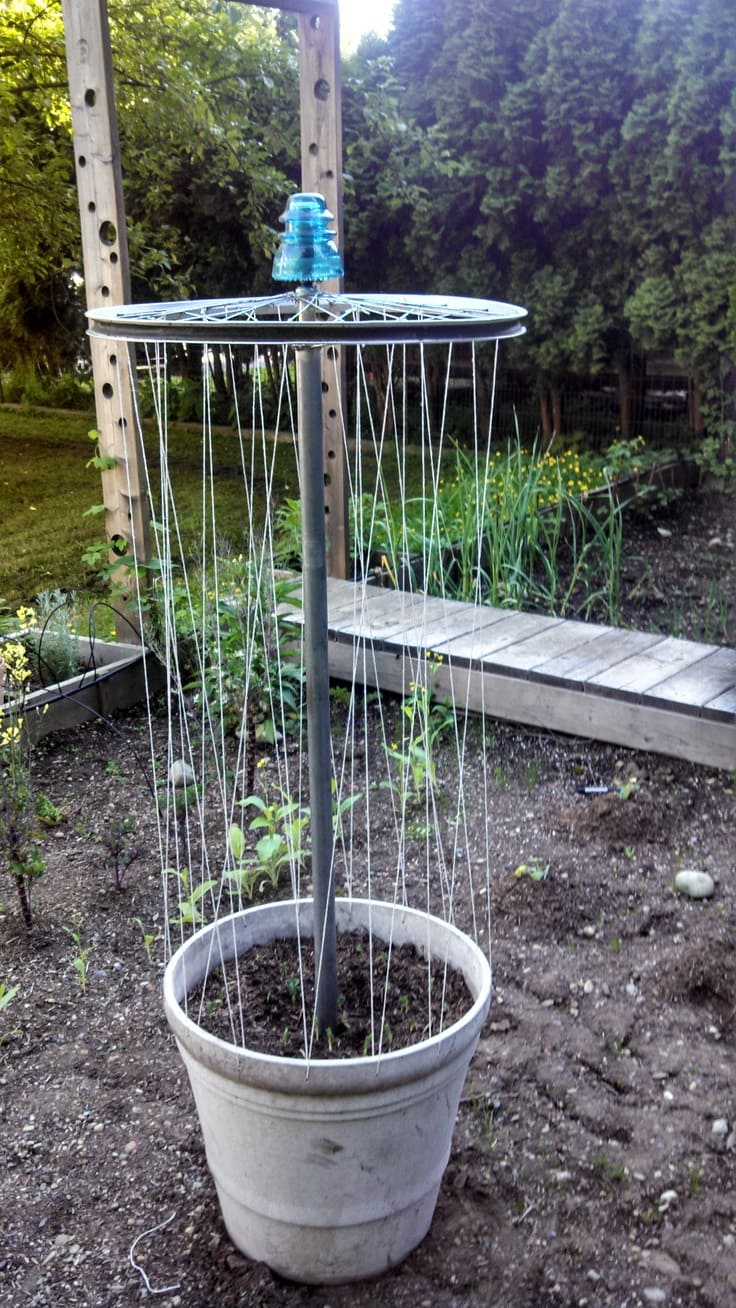
Here’s a clever garden hack that gives an old bicycle wheel new life and this time as a centerpiece for a vertical string trellis.
Ideal for small spaces or patio container gardening, this setup is surprisingly easy to make and incredibly functional. A metal or PVC pole is secured in the center of a large planter.
On top, a repurposed bike wheel is mounted horizontally. Strings are tied around the wheel’s rim and dropped vertically down to the base, where they’re anchored in the soil.
This structure gives vining plants like pole beans, cucumbers, or even sweet peas the perfect scaffolding to climb. It’s compact, portable, and allows you to grow upward making the most of tight spots.
Bonus tip: if you add a glass or ceramic ornament to the top, like the one pictured, it adds a whimsical finishing touch while deterring birds. It’s upcycled, eye-catching, and undeniably useful.
#11. Repurposed Spring Plant Protectors
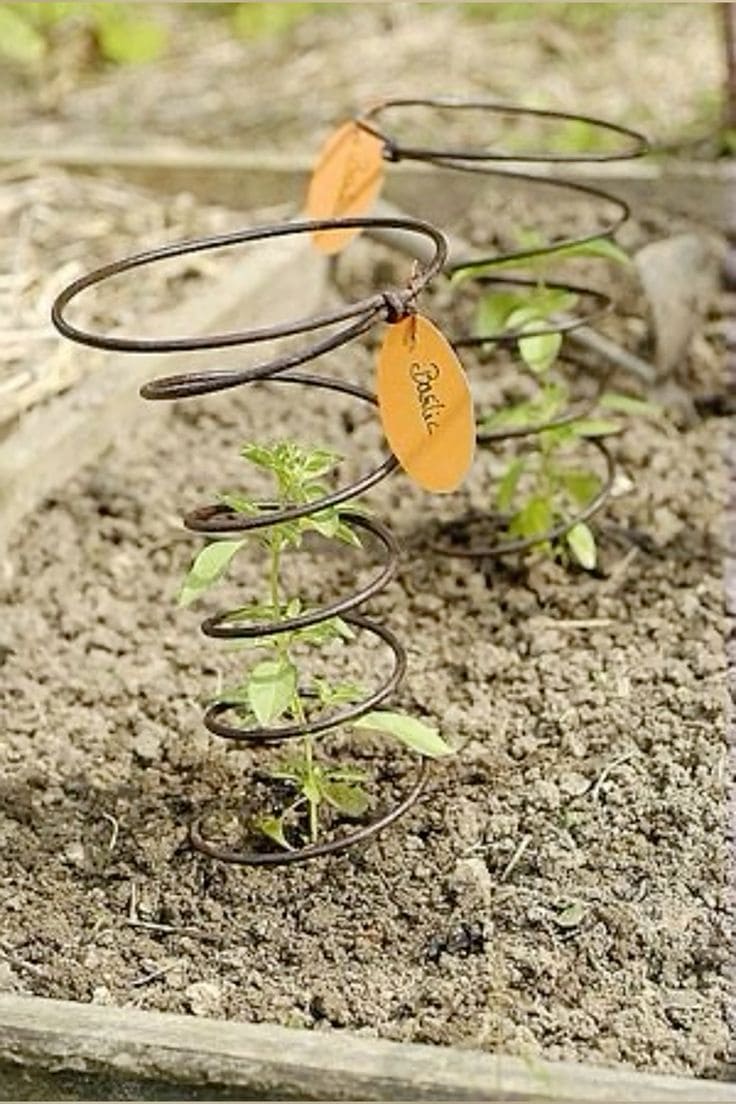
Here’s a clever way to breathe new life into old mattress or seat springs by turning them into rustic plant protectors! This idea is as resourceful as it is charming.
The coiled metal structure naturally encourages upward growth while shielding tender young seedlings from accidental bumps.
These spirals are a great fit for herbs like basil, oregano, or small chili peppers, especially when they’re still small and vulnerable. You can even label them, like in the photo, by tying on a simple plant tag for an added touch of organization and personality.
Aside from support, they also offer a nostalgic farmhouse aesthetic, perfect for anyone who loves mixing upcycled function with vintage charm. It’s proof that the best garden hacks don’t have to be expensive.
#12. Vintage Tile Plant Guard
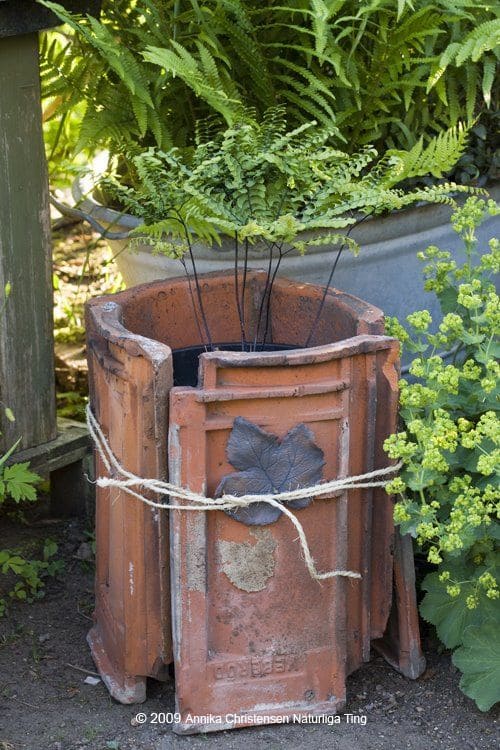
If you’re drawn to garden ideas that blend history and nature, this vintage tile plant guard is pure poetry. Old roof tiles are repurposed into a protective and decorative collar for a delicate fern.
Bound together with simple jute rope and adorned with metal leaf ornaments, the tiles form a rustic yet refined mini enclosure that adds instant charm to any shaded corner.
Moreover, the sturdy tile walls offer wind protection and help retain moisture around the base of the plant. The narrow opening encourages upright growth while shielding tender stems from accidental foot traffic or curious critters.
Inside, the plant is supported with discreet black wire arches that prevent flopping as the fern matures. This setup works beautifully for ferns, hostas, or even small ornamental grasses.
#13. Garden Chair Trellis
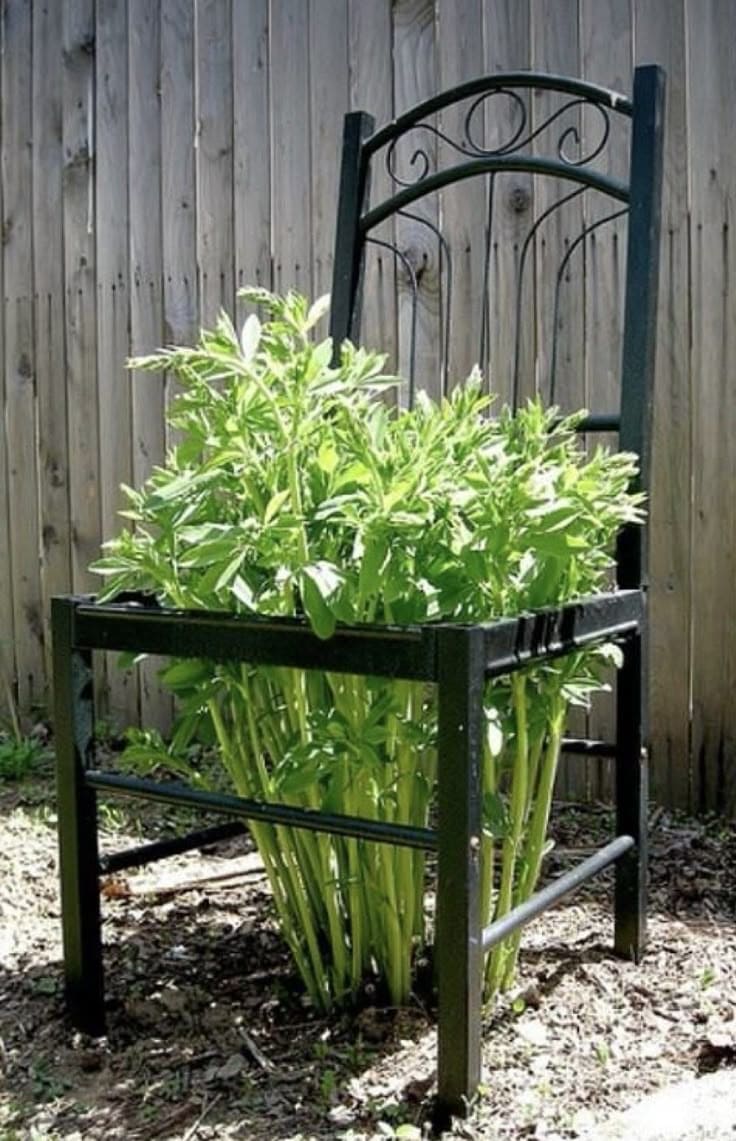
Who says old furniture has to end up in the trash? This quirky plant support idea transforms a discarded metal chair frame into an eye-catching trellis that’s full of personality.
By removing the seat and placing the chair directly over a growing bush or upright plant, you not only create visual interest but also provide a sturdy framework for support.
This setup works particularly well with tall perennials or bushy herbs like lovage, lemon balm, or sage. As the plant grows through the open seat, the backrest becomes a natural trellis for additional support or light climbing.
To make your own, simply find a sturdy chair with an open or removable seat and anchor it into the soil. Over time, the structure will blend beautifully into the greenery.
#14. Ladder-Style Vertical Veggie Trellis
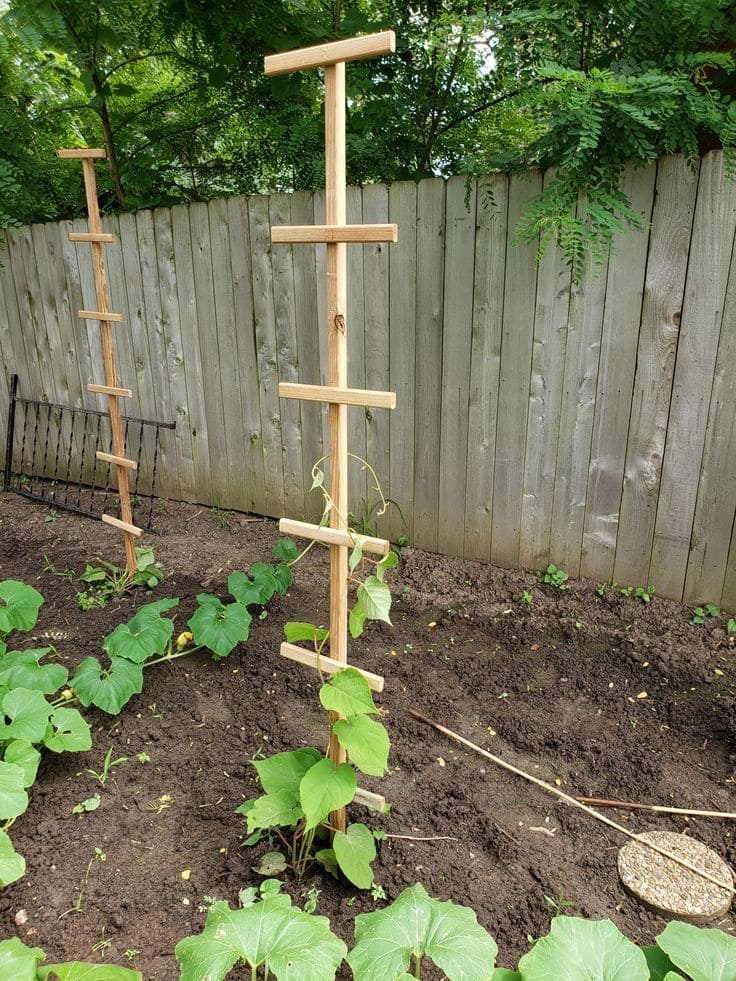
Made from two upright wooden posts with short horizontal slats nailed at intervals, this ladder-like frame helps guide plants like cucumbers, pole beans, or morning glories as they stretch toward the sun.
To make it, you’ll need a tall 1×2 or 2×2 wood post and several smaller crossbars. Evenly space and screw or nail the crossbars across the front, think ladder rungs, but slightly offset or asymmetrical to give tendrils something to wrap around.
Once built, press the base into the soil or stake it down for extra stability. This design works beautifully in rows, giving a clean, vertical rhythm to your vegetable patch.
Specially, the spacing helps maximize airflow and sun exposure, which keeps mildew and pests at bay. It’s the kind of DIY project that does its job quietly but transforms your garden’s function and feel.
#15. Sweet Pea Bamboo Climber Cage
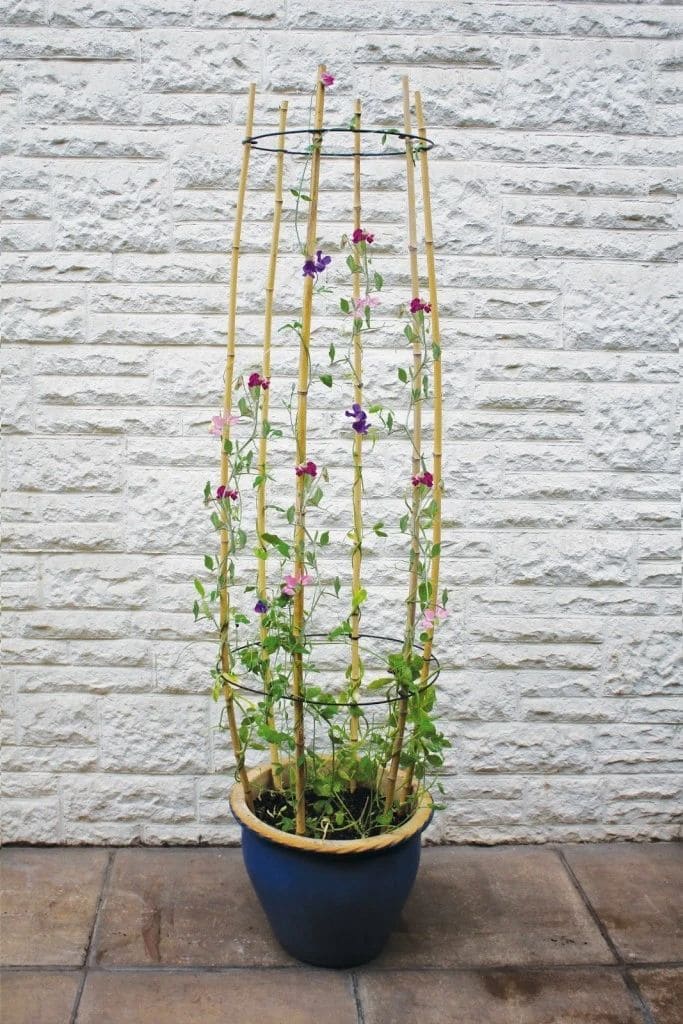
This clever vertical trellis made from bamboo stakes and wire rings is a practical and beautiful way to grow climbing plants in containers.
It’s perfect for sweet peas, morning glories, or even pole beans if you’re going for a functional-meets-charming setup on a patio or balcony.
To build this structure, place six to eight bamboo canes evenly around the inner rim of a large planter. Push them deep into the soil for stability.
Then, use garden wire, twine, or pre-formed metal rings to secure the canes at two or three different heights, forming a round cage that narrows slightly toward the top.
The shape encourages upward growth and keeps vining plants supported in a tidy form. The height draws the eye, and when the flowers bloom, it’s like watching a tower of petals rise.
